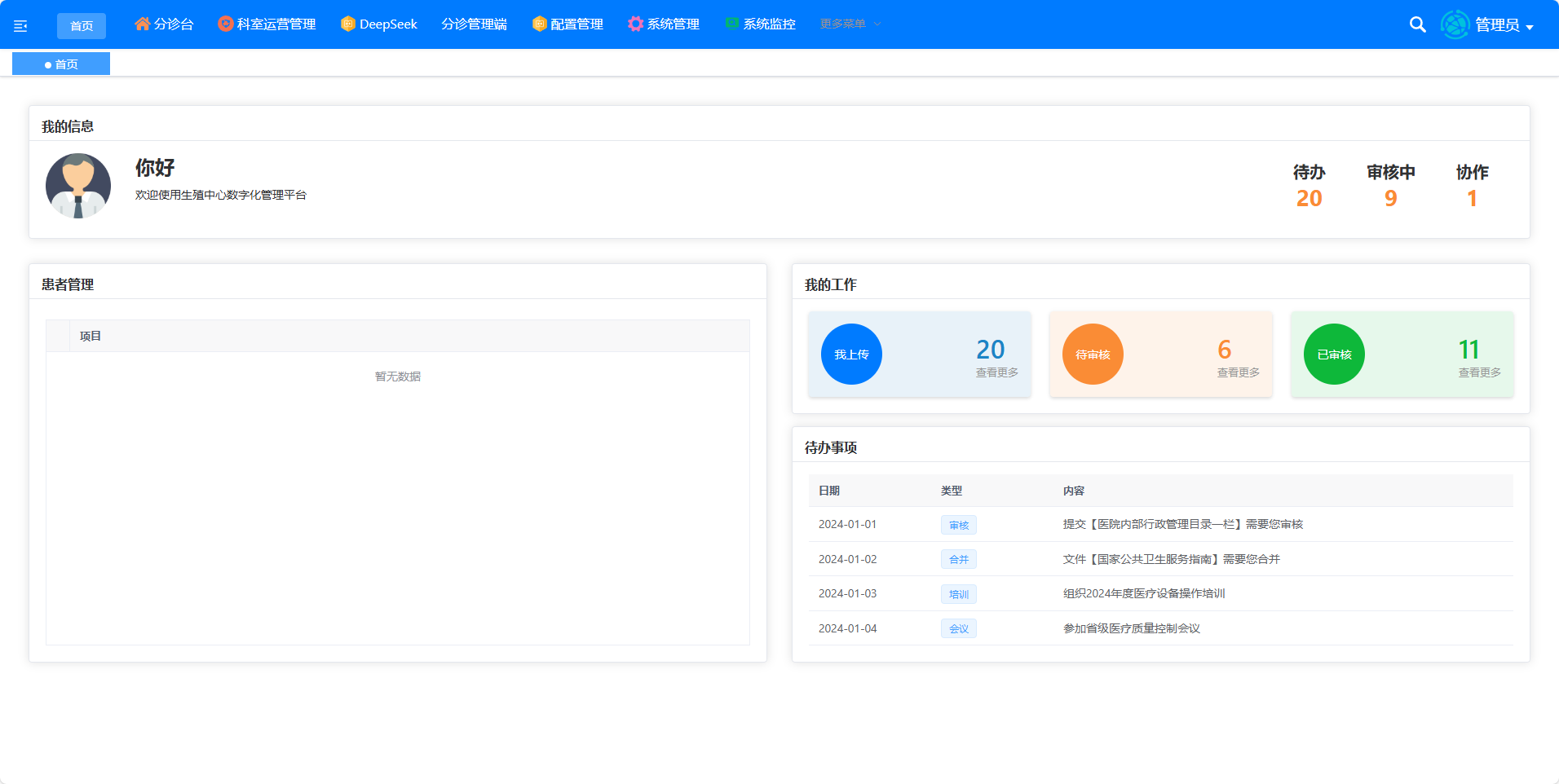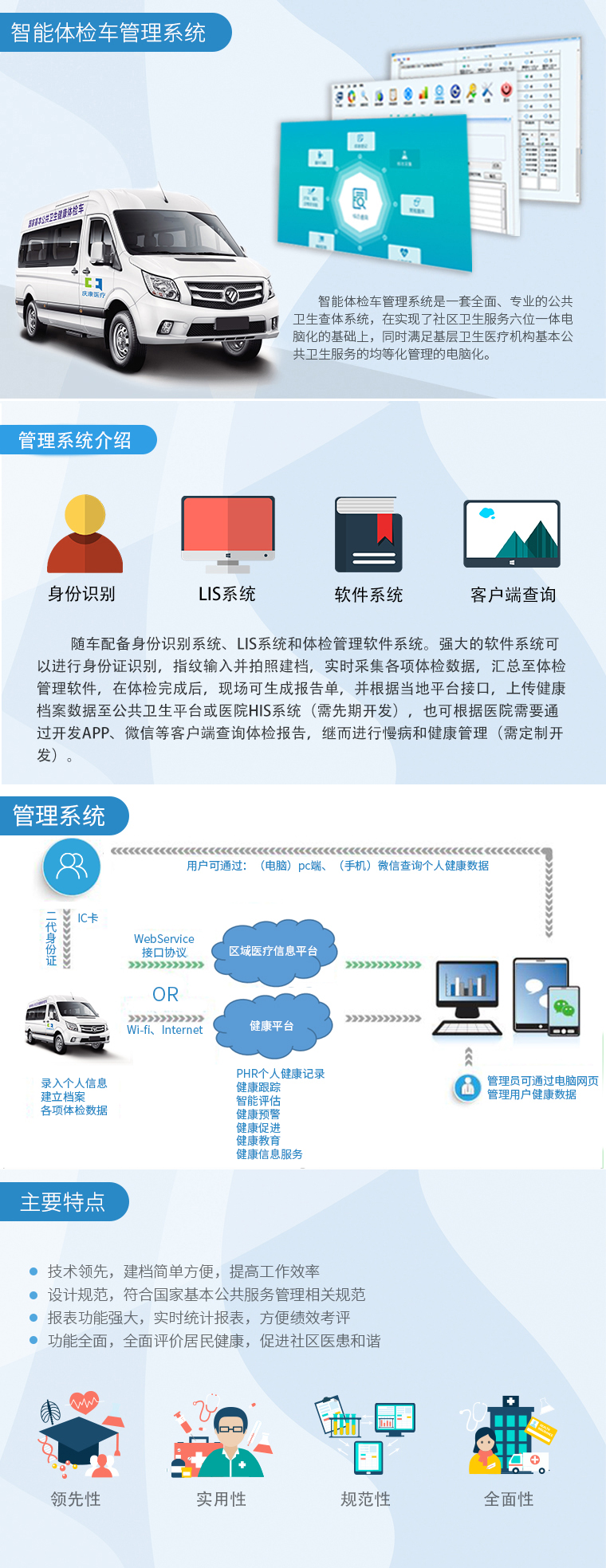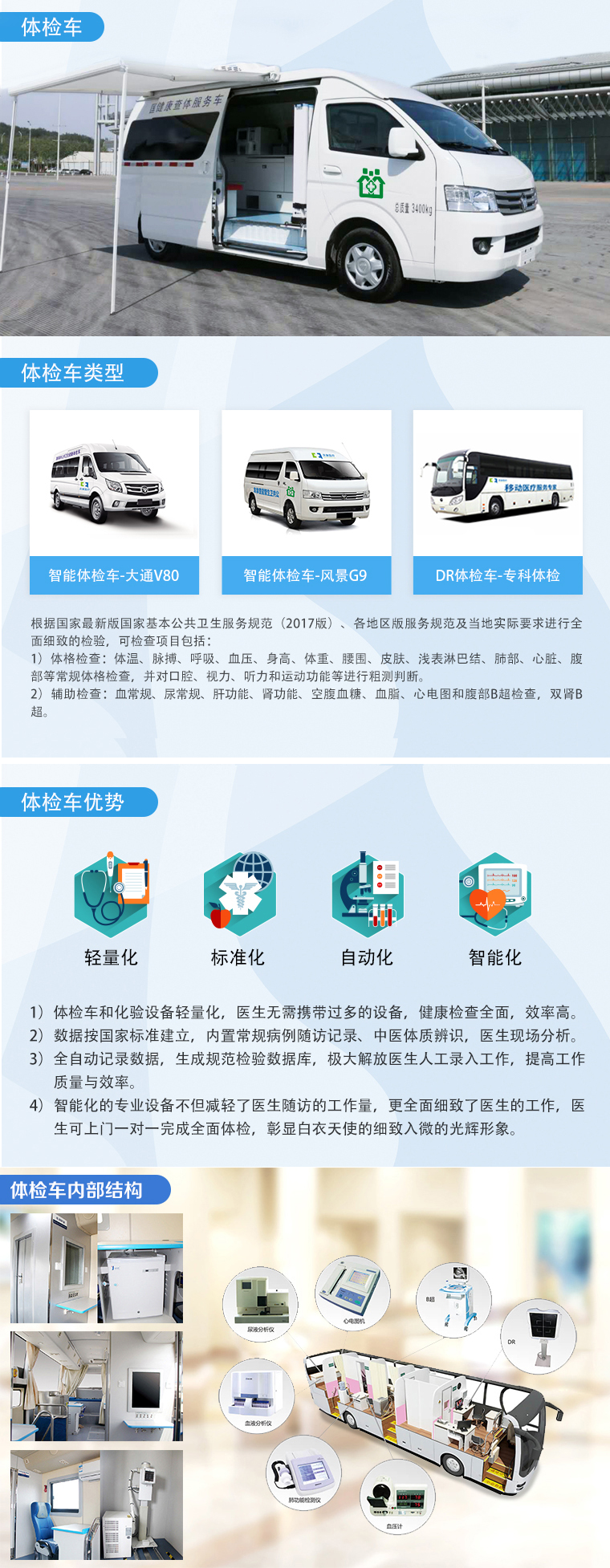实施案例
产品推荐
新闻推荐
慢病随访管理系统:藏在代码里的健康 “管家” 逻辑
- 2025-06-20
- http://www.guantangyiliao.com/ 原创
- 130
一、设计原理:让随访变成 “智能流水线”
1、 Design principle: Turn follow-up into an "intelligent assembly line"
1. 数据整合的 “收纳术”
1. The "storage technique" of data integration
系统的底层逻辑是构建一个慢性病患者的 “数字档案库”。它会将分散在医院 HIS 系统、体检中心、社区卫生服务站的患者数据(如诊断记录、用药史、检验结果等)通过接口技术进行抓取,再按照统一的标准(如国际疾病分类 ICD-10)进行结构化存储。比如一位糖尿病患者的空腹血糖、糖化血红蛋白、用药剂量等数据,会被自动归类到对应的 “疾病模块”,形成动态更新的电子健康档案,解决传统纸质档案分散、查询困难的问题。
The underlying logic of the system is to build a "digital archive" for chronic disease patients. It will capture patient data (such as diagnostic records, medication history, test results, etc.) scattered in hospital HIS systems, physical examination centers, and community health service stations through interface technology, and then store them in a structured manner according to unified standards (such as the International Classification of Diseases ICD-10). For example, the fasting blood glucose, glycosylated hemoglobin, medication dosage and other data of a diabetes patient will be automatically classified into the corresponding "disease module" to form a dynamically updated electronic health file, which solves the problem of scattered traditional paper files and difficult query.
2. 随访流程的 “剧本化” 设计
2. Script based design of follow-up process
系统会根据不同病种(如高血压、冠心病、慢阻肺等)的临床指南,预设标准化的随访路径。以高血压患者为例,系统会自动生成 “3 个月一次血压监测 + 6 个月一次心电图检查 + 年度并发症筛查” 的随访计划,就像为每种疾病编写了一本 “随访剧本”。医生也可根据患者个体情况(如高危人群或控制不佳者)调整随访频率和项目,这种 “标准化 + 个性化” 的设计,让随访不再依赖医生记忆,而是变成系统驱动的流程化操作。
The system will preset standardized follow-up pathways based on clinical guidelines for different diseases such as hypertension, coronary heart disease, chronic obstructive pulmonary disease, etc. Taking hypertensive patients as an example, the system will automatically generate a follow-up plan of "blood pressure monitoring every 3 months+electrocardiogram examination every 6 months+annual complication screening", just like writing a "follow-up script" for each disease. Doctors can also adjust follow-up frequency and items based on individual patient conditions (such as high-risk groups or poorly controlled individuals). This "standardized+personalized" design allows follow-up to no longer rely on doctor memory, but become a system driven process operation.
3. 智能提醒的 “闹钟机制”
3. "Alarm clock mechanism" for intelligent reminders
系统内置的时间触发引擎是随访不遗漏的关键。它会根据随访计划设定 “闹钟”:当患者该测血糖时,系统会提前 3 天向患者推送短信提醒(如 “您的糖尿病随访日期临近,建议明日检测空腹血糖”);对未按时随访的患者,系统会自动标记为 “逾期”,并向管床医生推送预警,医生可通过系统直接发起电话随访或预约挂号。某社区卫生服务中心使用系统后,高血压患者随访及时率从 65% 提升至 92%,正是得益于这种 “人机协同” 的提醒机制。
The built-in time triggered engine in the system is the key to ensuring uninterrupted follow-up. It will set an "alarm clock" according to the follow-up plan: when the patient needs to measure blood glucose, the system will push a short message reminder to the patient 3 days in advance (such as "Your diabetes follow-up date is approaching, it is recommended to detect fasting blood glucose tomorrow"); For patients who have not been followed up on time, the system will automatically mark them as "overdue" and push a warning to the bed management doctor. Doctors can directly initiate telephone follow-up or appointment registration through the system. After the use of the system in a certain community health service center, the timely follow-up rate of hypertension patients increased from 65% to 92%, thanks to the "human-machine collaboration" reminder mechanism.

4. 数据挖掘的 “健康侦探” 功能
4. The "health detective" function of data mining
系统不仅存储数据,还能扮演 “健康侦探” 的角色。通过机器学习算法,它会对患者数据进行分析:比如发现某患者连续两次血压测量值超过 160/100mmHg 且心率加快,系统会自动标记为 “血压控制不佳”,并向医生推荐调整用药的参考方案;对长期未规律用药的患者,系统会生成 “依从性分析报告”,帮助医生制定干预策略。这种数据驱动的决策支持,让随访从单纯的 “问病情” 升级为 “预测风险”。
The system not only stores data, but also plays the role of a "health detective". Through machine learning algorithms, it will analyze patient data: for example, if a patient's blood pressure measurement exceeds 160/100mmHg twice in a row and their heart rate increases, the system will automatically mark it as "poor blood pressure control" and recommend a reference plan for adjusting medication to the doctor; For patients who have not taken medication regularly for a long time, the system will generate a "compliance analysis report" to help doctors develop intervention strategies. This data-driven decision support elevates follow-up from simply asking about the condition to predicting risk.
二、设计初衷:破解慢性病管理的 “三大困局”
2、 Original intention of design: to solve the "three major dilemmas" in chronic disease management
1. 对抗 “人海战术” 的效率困局
1. Efficiency dilemma in combating the "sea of people tactics"
随着老龄化加剧,我国慢性病患者已超 3 亿,一名社区医生可能需要管理数百名患者。传统随访靠 “打电话 + 纸质登记”,不仅效率低下(随访 100 人需 3-4 天),还容易因漏记导致随访脱节。系统的自动化功能将医生从重复劳动中解放出来,某三甲医院的统计显示,使用系统后医生单次随访操作时间从 8 分钟缩短至 2 分钟,日均随访量提升 4 倍,让有限的医疗资源能覆盖更多患者。
With the increasing aging population, the number of chronic disease patients in China has exceeded 300 million, and a community doctor may need to manage hundreds of patients. Traditional follow-up relies on "phone calls+paper registration", which is not only inefficient (it takes 3-4 days to follow up 100 people), but also prone to disconnection due to missed records. The automation function of the system liberates doctors from repetitive labor. According to statistics from a tertiary hospital, after using the system, the single follow-up operation time of doctors has been reduced from 8 minutes to 2 minutes, and the daily follow-up volume has increased by 4 times, allowing limited medical resources to cover more patients.
2. 突破 “碎片化” 的管理困局
2. Break through the management dilemma of "fragmentation"
慢性病管理需要长期、连续的健康数据支撑,但患者可能在不同医院就诊,导致数据 “碎片化”。系统通过整合多源数据,为医生提供患者全周期的健康画像:比如一位冠心病患者,系统会自动关联其在 A 医院的造影结果、B 药店的购药记录、社区的血压监测数据,医生可通过 “时间轴视图” 直观看到病情演变,避免因信息不全导致的误诊漏诊。这种 “数据跑路” 代替 “患者跑腿” 的设计,让管理更精准。
Chronic disease management requires long-term and continuous health data support, but patients may seek treatment in different hospitals, leading to data fragmentation. The system integrates multiple sources of data to provide doctors with a comprehensive health profile of patients throughout their entire life cycle. For example, for a coronary heart disease patient, the system automatically associates their imaging results at Hospital A, medication purchase records at Pharmacy B, and blood pressure monitoring data in the community. Doctors can visually see the progression of the disease through the "timeline view", avoiding misdiagnosis and missed diagnosis caused by incomplete information. This design of "data running" replacing "patient running errands" makes management more precise.
3. 扭转 “重治疗轻管理” 的观念困局
3. Reverse the concept dilemma of "emphasizing treatment over management"
传统医疗体系更侧重疾病急性发作期的治疗,而慢性病更需要 “防大于治” 的管理理念。系统通过设置 “健康干预模块”,将随访与健康教育结合:比如向糖尿病患者推送饮食图谱、运动计划,患者可通过系统上传血糖日志并获得 AI 语音指导。某地区试点数据显示,使用系统的患者其血糖达标率比未使用组高 27%,住院率下降 19%,证明系统能有效推动医疗模式从 “治病” 向 “防病” 转变,降低整体医疗负担。
The traditional medical system focuses more on the treatment of acute exacerbations of diseases, while chronic diseases require a management philosophy of "prevention is greater than cure". The system combines follow-up with health education by setting up a "health intervention module": for example, to push diet maps and exercise plans to diabetes patients, patients can upload blood glucose logs through the system and obtain AI voice guidance. According to pilot data from a certain region, patients who use the system have a 27% higher blood glucose compliance rate and a 19% decrease in hospitalization rate compared to those who do not use it. This proves that the system can effectively promote the transformation of the medical model from "treating diseases" to "preventing diseases" and reduce the overall medical burden.
本文由慢病随访管理系统友情奉献.更多有关的知识请点击:http://www.guantangyiliao.com我们将会对您提出的疑问进行详细的解答,欢迎您登录网站留言.
This article is a friendly contribution from the occupational disease examination system For more information, please click: http://www.guantangyiliao.com We will provide detailed answers to your questions. You are welcome to log in to our website and leave a message.




